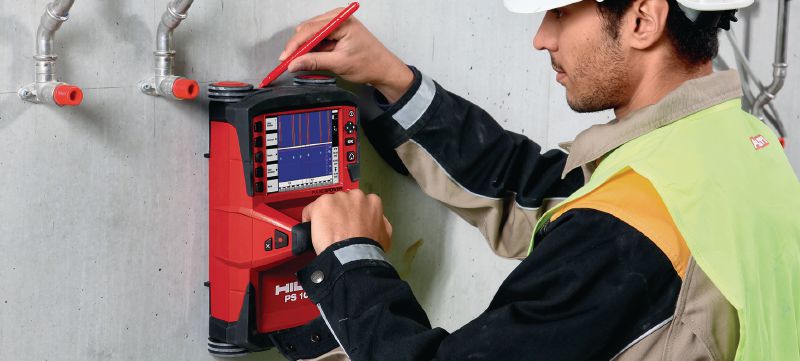RainierGPR Concrete Scanning: Secret Insights for Effective Tasks
RainierGPR Concrete Scanning: Secret Insights for Effective Tasks
Blog Article
Exploring the Depths: A Comprehensive Guide to Concrete Scanning and Its Diverse Applications
In the world of building and construction and facilities development, the thorough process of concrete scanning holds a crucial duty in guaranteeing the structural integrity and safety and security of projects. As technology proceeds to develop, the applications of concrete scanning have broadened much past simple surface-level evaluations.
Significance of Concrete Scanning
Understanding the importance of concrete scanning is critical in making sure the security and honesty of frameworks throughout construction and improvement jobs. Concrete scanning makes use of sophisticated technologies such as ground-penetrating radar (GPR) and electro-magnetic induction to spot embedded things, gaps, or various other anomalies within concrete frameworks.
Moreover, concrete scanning plays a crucial role in guaranteeing compliance with building ordinance and regulations that mandate the security of existing architectural elements during construction activities. By precisely drawing up the inner structure of concrete, scanning innovations allow construction specialists to make enlightened decisions that promote the architectural stability and resilience of structures and infrastructure tasks. Basically, the significance of concrete scanning depends on its capacity to safeguard both the architectural honesty and the workers associated with building endeavors.
Technologies Used in Concrete Scanning
Concrete scanning counts on advanced technologies such as ground-penetrating radar (GPR) and electromagnetic induction to properly spot ingrained things and anomalies within concrete structures. Ground-penetrating radar runs by releasing high-frequency electromagnetic waves right into the concrete. When these waves come across different products or gaps within the concrete, they recover to the surface area, permitting the GPR system to produce an in-depth subsurface image. This technology is specifically efficient in finding rebar, post-tension wires, avenues, and various other things installed in concrete.
Electro-magnetic induction, on the other hand, works by generating magnetic fields around a concrete framework via a transmitter coil. When steel things exist within the concrete, they disrupt these electromagnetic fields, causing eddy currents to flow via the steel. By measuring the adjustments in the electro-magnetic areas with a receiver coil, the system can identify the place of metallic objects in the concrete.
These sophisticated modern technologies play a crucial duty in non-destructive testing, making sure the security and stability of concrete frameworks in different industries.
Applications in Construction Market
Within the building industry, concrete scanning innovation locates varied applications that enhance job efficiency and security. One crucial application is the discovery of rebar, post-tension cable televisions, and other embedded things prior to exploration or cutting into concrete structures. By accurately mapping out these aspects, building and construction groups can prevent pricey damages, make certain structural stability, and prevent possible security dangers. In addition, concrete scanning is used for situating voids, such as air pockets or locations of wear and tear within concrete, which can compromise the overall strength of a framework. By determining these spaces early on, building and construction professionals can take essential procedures to resolve them and preserve the sturdiness of the building. Concrete scanning plays an important duty in top quality control by confirming the density of concrete covers over support, making certain conformity with layout requirements and standards. Overall, the applications of concrete scanning check this in the building sector contribute significantly to improving job process, decreasing risks, and delivering premium results.

Security Benefits of Concrete Scanning
In the world of construction security, the application of concrete scanning technology presents a critical advantage in preemptively determining prospective dangers and strengthening architectural integrity. By using sophisticated scanning techniques such as ground-penetrating radar (GPR) and electromagnetic induction, building teams can properly situate rebar, post-tension cords, avenues, and other covert objects within concrete frameworks. This positive strategy dramatically decreases the risk of accidental strikes throughout drilling, cutting, or coring activities, therefore preventing pricey damages, injuries, and job hold-ups.
In addition, concrete scanning enhances worker safety and security by providing real-time info about the architectural problem of concrete aspects. By addressing potential safety problems promptly, concrete scanning adds to developing a safe and secure functioning setting original site and minimizing the probability of architectural failings or mishaps on building sites.
Future Patterns in Concrete Scanning
Arising improvements in scanning innovation are positioned to reinvent the field of concrete inspection and analysis. One significant trend that is obtaining traction is the assimilation of artificial intelligence (AI) and device learning like it algorithms right into concrete scanning tools. By using the power of AI, these systems can assess huge quantities of information accumulated throughout scanning processes to give more in-depth and exact understandings into the condition of concrete structures. This can aid in finding covert defects, forecasting potential structural failures, and also recommending maintenance methods.
An additional significant fad is the advancement of more straightforward and portable scanning tools. Miniaturization of scanning devices enables for easier access to confined areas and remote locations, making assessments much more detailed and effective. In addition, innovations in cordless communication modern technologies allow real-time information transfer and analysis, helping with quicker decision-making procedures.
In addition, there is an expanding focus on sustainability in concrete scanning innovations - RainierGPR Concrete Scanning. Makers are increasingly incorporating green products and energy-efficient functions right into their gadgets to reduce ecological effect. These future fads are set to improve the efficiency, precision, and sustainability of concrete scanning techniques, forming the market's future landscape
Final Thought
In conclusion, concrete scanning plays a vital role in the building market by making certain the safety and performance of numerous tasks. By making use of innovative modern technologies, such as GPR and radar imaging, specialists are able to properly spot prospective hazards within concrete frameworks. The applications of concrete scanning are vast and remain to progress, making it an essential tool for maintaining the stability of structures and facilities. As innovation breakthroughs, the future of concrete scanning holds appealing advancements for improving building and construction processes.

Report this page